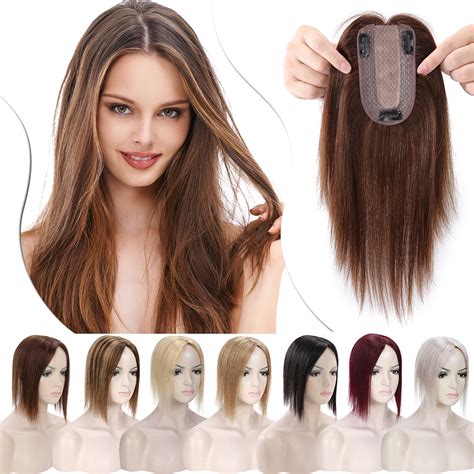Introduction
Are you grappling with hair loss or thinning and seeking a solution to enhance your locks? Navigating the world of hair restoration options can be daunting, especially when faced with the choice between hair extensions and hair toppers. Both techniques offer distinct advantages and drawbacks, and choosing the right one for your individual needs is paramount. This comprehensive guide delves into the intricacies of hair extensions vs hair toppers, providing you with the knowledge to make an informed decision.

Understanding Hair Extensions
What are Hair Extensions?
Hair extensions are additional strands of hair that are attached to your natural hair, adding length, volume, or both. They come in various types and attachment methods, tailored to meet different hair needs.
Types of Hair Extensions
- Clip-in Extensions: Non-permanent extensions that can be easily clipped in and removed, offering instant volume and length.
- Tape-in Extensions: Tape-based extensions that are adhered to your hair using a double-sided tape, providing a natural look and longer-lasting wear.
- Fusion Extensions: Heat-bonded extensions that fuse individual strands of hair to your own, creating a more permanent hold.
- Micro-Link Extensions: Small metal beads are used to attach extensions to your natural hair, providing a discreet and comfortable wear.
- Sew-in Extensions: Extensions that are sewn into your own hair, creating a long-term solution but requiring more maintenance.
Understanding Hair Toppers
What are Hair Toppers?
Hair toppers are partial hair pieces that are placed on top of your head to conceal thinning or balding areas. They are typically smaller than hair extensions, covering only a specific section of the scalp.
Types of Hair Toppers
- Base Type: Toppers can have various base types, such as lace, silk, or monofilament, which provide different levels of breathability and comfort.
- Hair Type: Toppers come in different types of hair, including human hair, synthetic hair, and a blend of both. Human hair toppers offer the most natural look and feel.
- Attachment Method: Toppers can be attached using clips, tape, or glue, offering varying levels of security and comfort.
Hair Extension vs Hair Topper: A Comparative Analysis
To facilitate your decision-making, we present a comparative analysis of hair extensions and hair toppers:
| Feature | Hair Extensions | Hair Toppers |
|---|---|---|
| Primary Function: | Lengthen, volumize, or both | Conceal thinning or balding areas |
| Fullness: | Can achieve significant length and volume | Partial coverage, limited volume |
| Coverage: | Can be applied to any area of the head | Targeted coverage for specific areas |
| Maintenance: | Requires regular styling, washing, and maintenance | Less maintenance than full hair extensions |
| Damage: | Can cause some damage if applied incorrectly or worn for extended periods | Minimal damage to natural hair |
| Cost: | Generally more expensive than hair toppers | Less expensive than full hair extensions |
Choosing the Right Option for You
The best choice for you depends on your specific hair needs and preferences. Consider the following factors:
- Hair Loss Type: If you have diffuse thinning or hair loss, a hair topper may be a better option. For areas of concentrated hair loss, hair extensions might be more suitable.
- Desired Volume and Length: Hair extensions offer significant volume and length, while hair toppers provide partial coverage.
- Maintenance: Hair extensions require more regular maintenance, while hair toppers are generally low-maintenance.
- Cost: Hair extensions tend to be more expensive than hair toppers.
Tips and Tricks
- Consult a Professional: Seek consultation from a licensed hair stylist or trichologist to determine the best option for your hair type and lifestyle.
- Match Hair Texture: Ensure the extensions or topper matches your natural hair texture for a seamless blend.
- Color Customization: Color your extensions or topper to match your hair color, creating a natural-looking result.
- Practice Application: Practice applying and removing hair extensions before wearing them out to perfect your technique.
- Maintenance: Follow the recommended maintenance instructions for your specific extensions or topper to extend their lifespan.
Conclusion
Whether you choose hair extensions or a hair topper, both options offer effective solutions for enhancing your hair’s appearance. By understanding the differences, benefits, and drawbacks of each method, you can make an informed decision that aligns with your individual needs. Remember to approach this process with confidence and the knowledge that you can achieve beautiful, healthy hair.
